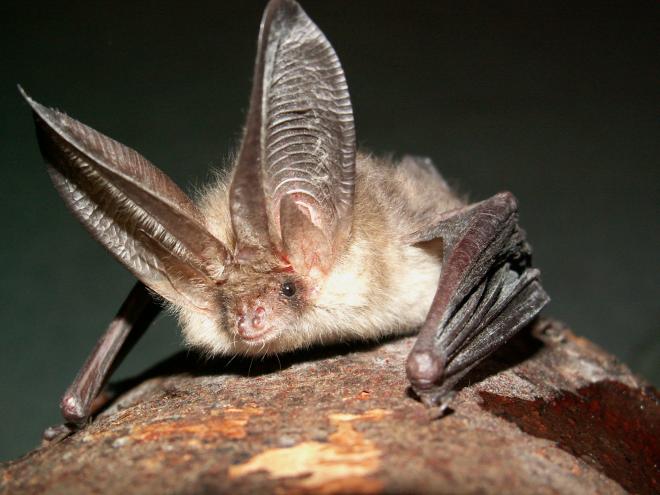Brown long–eared bat: Red Data Book of Armenia

Vesper bats - Vespertilionidae
Status. A rare species of decreasing population. Listed in the IUCN Red List of Threatened Species (ver. 3.1) as Least Concern. According to IUCN criteria categorized as Vulnerable VU B1a.
Distribution. Southern Europe, Siberia, Manchuria, Northern Mongolia, Altai Mts., South Caucasus.
Distribution in Armenia. The northern and north–eastern parts of the country.
Habitats. Inhabits cellars and lofts of different buildings. It can also occur in tree hollows and rock crevices up to 2450 m above sea level. The preference is given to mountain grasslands, forests, scrubs and glades near the water bodies.
Biological traits. The same–sex wintering colonies can number up to 170 or more individuals. Females and the young hibernate separately from males. Activity is nocturnal. Flight is hovering. In mid–June the female produces one, seldom two, babies. Feeds on small butterflies, moths and mosquitos, frequently picking up the larvae and small butterflies from tree branches and scrub twigs.
Population size and its trends. The range is significantly shrinking. Colonies and the population in general are also decreasing.
Major threats. Felling of old hollow trees and destruction of old wooden buildings.
Conservation measures. Not protected. It is essential to set aside the bat habitats as sanctuaries.
Suggestions
 The Ministry of Environment sent a letter international partners to draw their attention to the real danger of environmental disasters as a result of Azerbaijan's large-scale aggression towards the territory of Armenia
The Ministry of Environment sent a letter international partners to draw their attention to the real danger of environmental disasters as a result of Azerbaijan's large-scale aggression towards the territory of Armenia
 Vicia pisiformis: Red Data Book of Armenia
Vicia pisiformis: Red Data Book of Armenia
 Vavilovia formosa: Red Data Book of Armenia
Vavilovia formosa: Red Data Book of Armenia
 Trigonella capitata: Red Data Book of Armenia
Trigonella capitata: Red Data Book of Armenia
 Trigonella astroides: Red Data Book of Armenia
Trigonella astroides: Red Data Book of Armenia












